Sleep with the fishes: Glamping at the Singapore Oceanarium
Sign up now: Get ST's newsletters delivered to your inbox
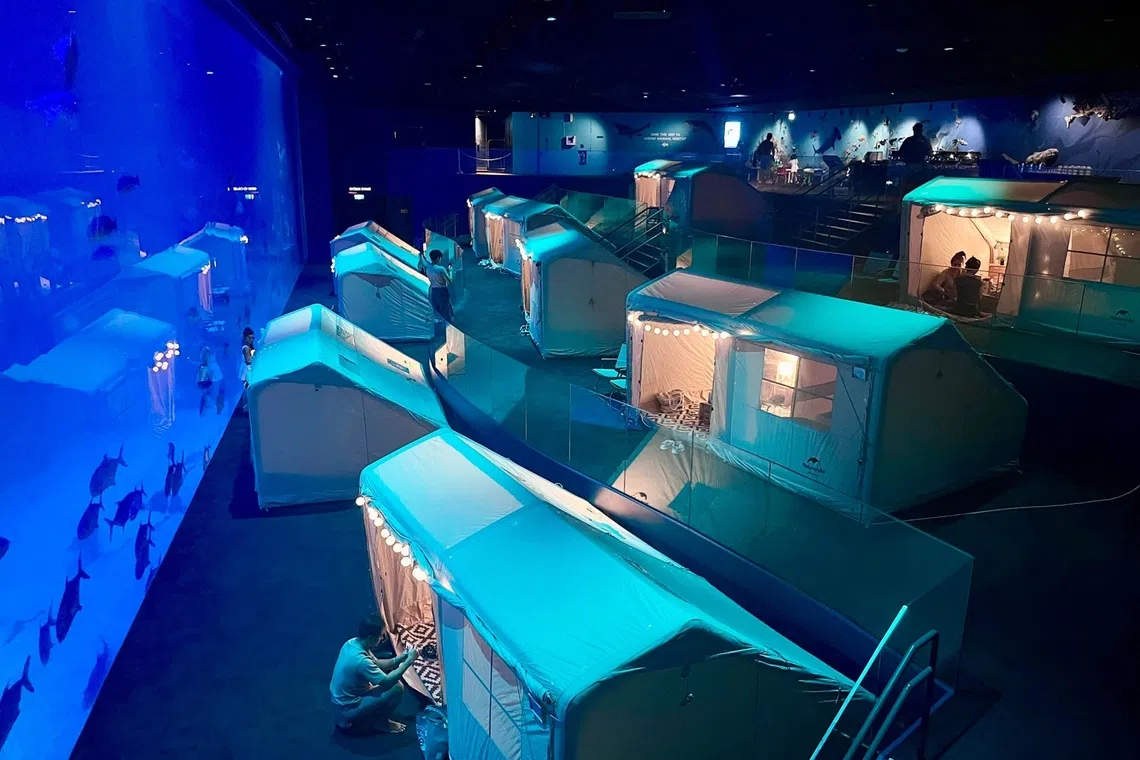
Glamping at the Singapore Oceanarium lets one discover the wonders of the sea from a cosy tent.
ST PHOTO: AMRITA KAUR
Follow topic:
- Resorts World Sentosa relaunched Ocean Dreams, a unique overnight glamping experience at the Singapore Oceanarium for select weekends in November/December.
- Guests enjoy after-hours access, private tours and dining, and sleep in air-conditioned tents amid marine life, with options for Ocean Gallery or Dome tents.
- The experience includes meals and behind-the-scenes tours costing $1,800 (four guests) or $3,800 (eight guests); bookings via www.singaporeoceanarium.com/ocean-dreams
AI generated
SINGAPORE – If you cannot get enough of the underwater world with its fascinating denizens, this is for you.
Resorts World Sentosa is relaunching Ocean Dreams, an overnight glamping experience at the Singapore Oceanarium.
Running across four select weekends between November and December, it lets guests discover the wonders of the watery realm from glamping tents nestled in the heart of the oceanarium.
The Straits Times goes on a media preview of Ocean Dreams on Sept 25 and 26.
A private world after hours
Things kick off promisingly with an after-hours tour of the oceanarium that makes me feel like a VIP.
It is around 5pm, but the usual crowds have left and there is a calm, hushed atmosphere. My guide, Ms Felicia Foo, leads us through the dim galleries, where tanks glow in the dark.
At the Drop of Water zone, a shimmering digital projection shows how tiny plankton in a droplet gave rise to today’s marine life.
At the Sea Jellies zone, I stand in front of a massive tank where thousands of moon jellies drift along like floating lanterns. In another tank, fried egg sea jellies pulse gently to a dreamy piped-in soundtrack.
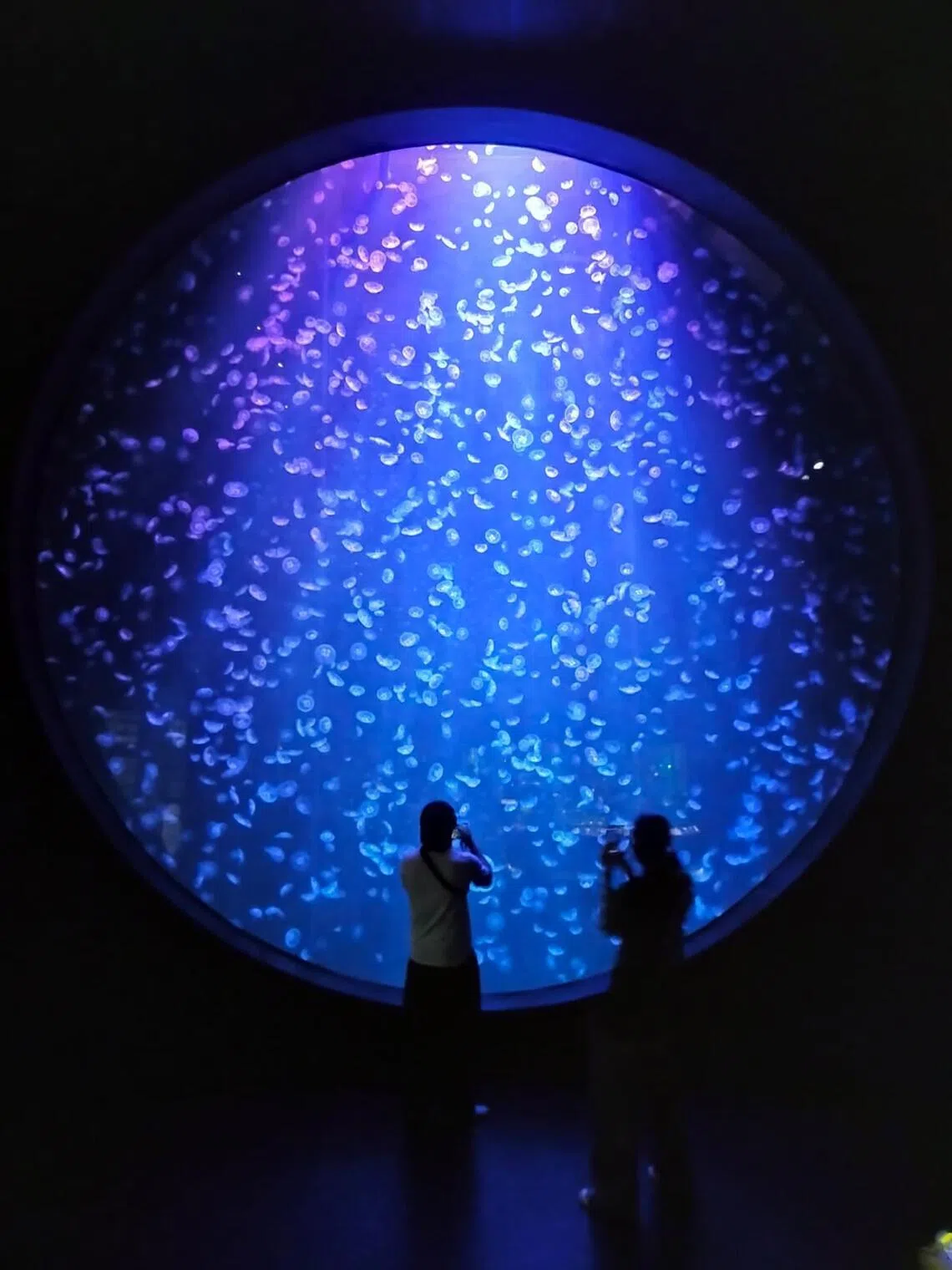
A massive circular tank filled with thousands of moon jellies that drift and glow in a mesmerising display.
ST PHOTO: AMRITA KAUR
Then it is back to the prehistoric era at Ancient Waters zone. Animatronics of giant creatures like Dunkleosteus loom beside tanks of “living fossils” such as the Australian lungfish and horseshoe crab.
I learn that the horseshoe crab is not really a crab at all. It is more closely related to spiders and scorpions, and has been around for 445 million years. And its blood is blue.
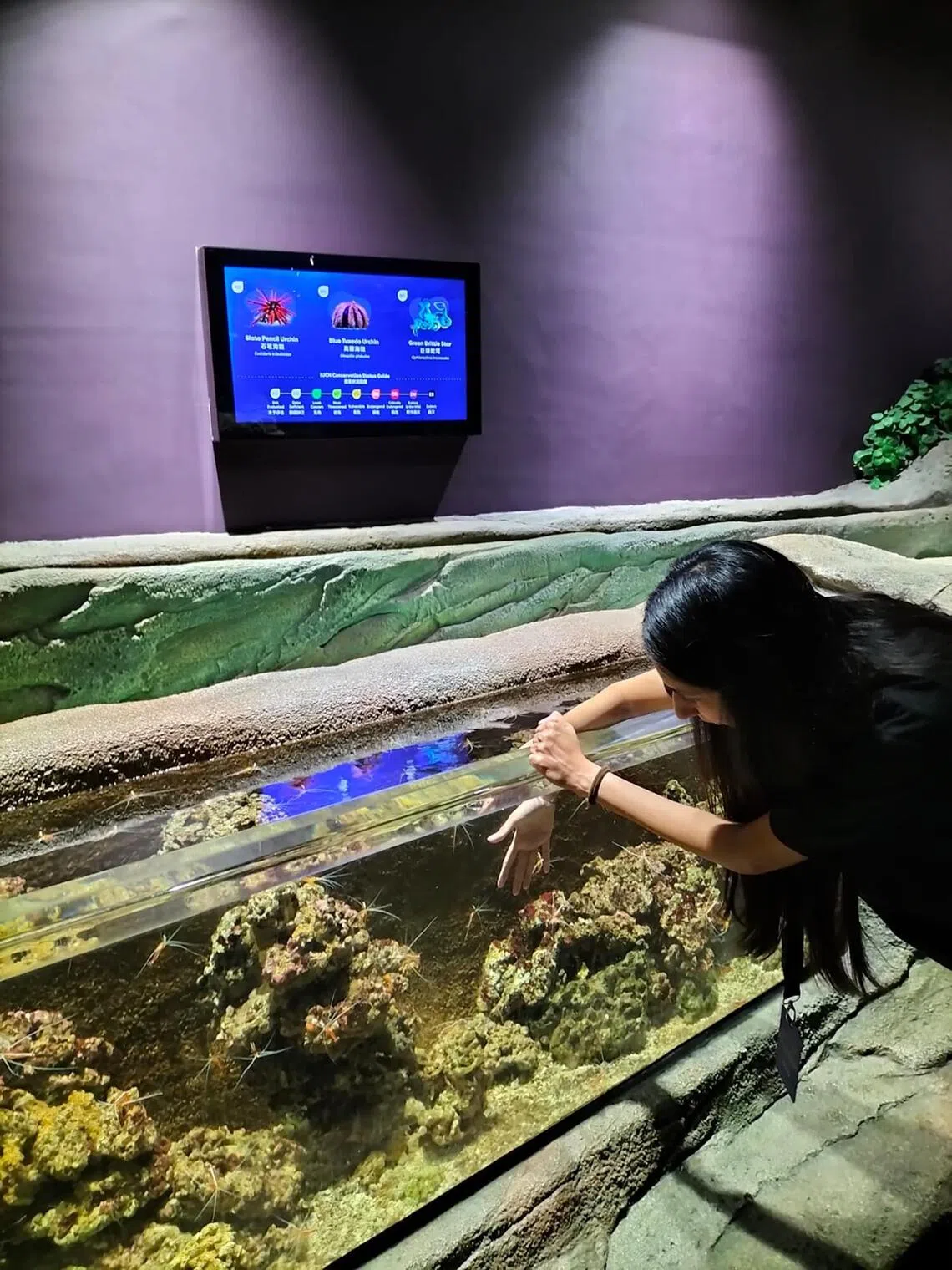
Writer Amrita Kaur putting her hand in the cleaner shrimp tank.
ST PHOTO: AMRITA KAUR
At the Singapore Coast section, I cautiously dip my hands into a shallow tank where tiny cleaner shrimp dart about.
These industrious crustaceans are nature’s spa therapists, picking parasites and dead skin off passing fish and, occasionally, curious humans. Despite several hopeful attempts, none takes interest in me.
“Maybe your hands are too clean,” Ms Foo jokes.
We wrap up the tour with a bingo challenge which involves spotting animals and details around the exhibits. My reward for completing it is a Japanese spider crab badge.
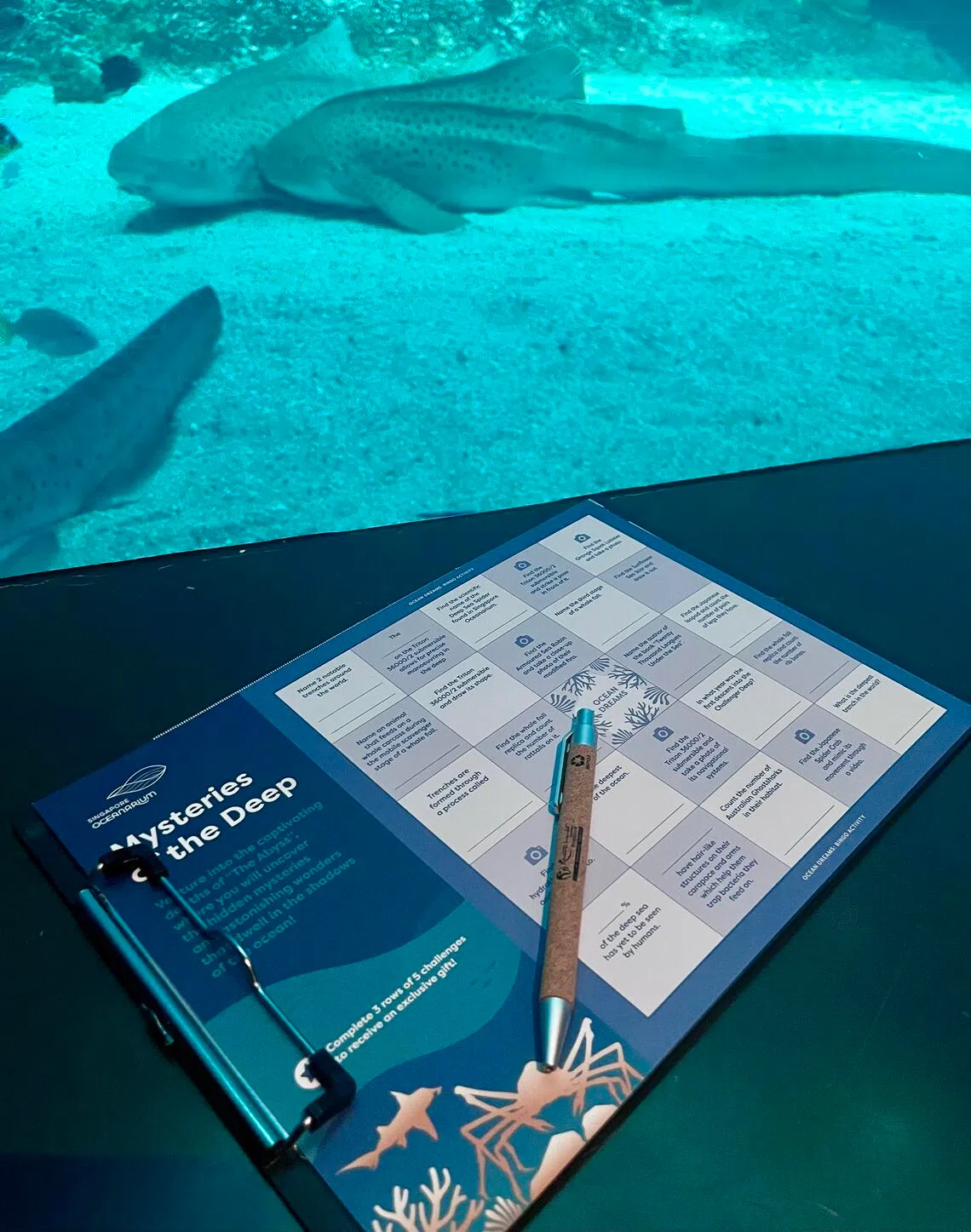
A bingo challenge which involved spotting animals and details around the oceanarium’s exhibits.
ST PHOTO: AMRITA KAUR
Dining in quiet waters
Dinner is at Explorer’s Nook cafe, where a buffet spread features dishes such as pizza, chicken fricassee, pasta and stir-fried beef, and desserts like chocolate s’mores tart with toasted marshmallows.
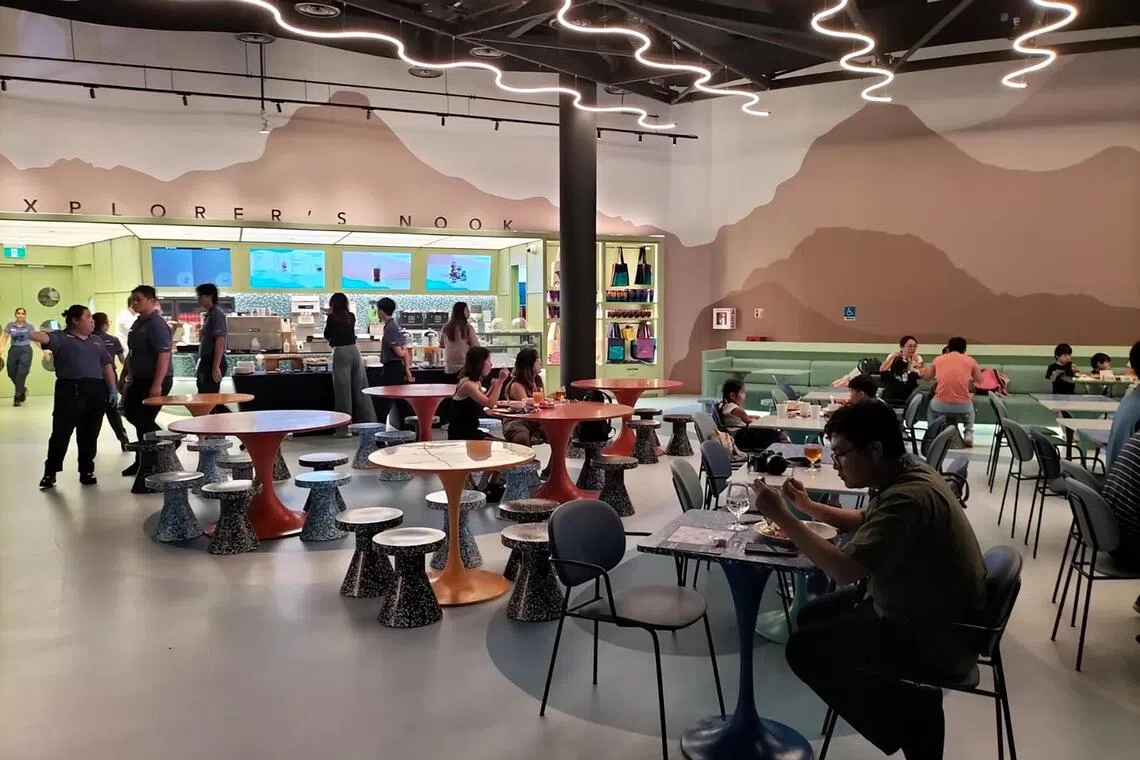
Buffet dinner at Explorer’s Nook cafe at the oceanarium.
ST PHOTO: AMRITA KAUR
We have the rare chance to wander the oceanarium on our own after dark.
Ms Foo says certain animals – such as the moray eel, red lionfish, tawny nurse shark and whitetip reef shark – tend to be more active at night.
I linger in front of the tanks, watching as the ocean’s night shift begins. The lionfish fans out its feathery spines, the moray eel slithers from its crevice and the sharks begin their slow, hypnotic patrol through the blue.
While I had visited the old S.E.A. Aquarium before, this is my first time at the much larger Singapore Oceanarium. At night, it feels even more magical.
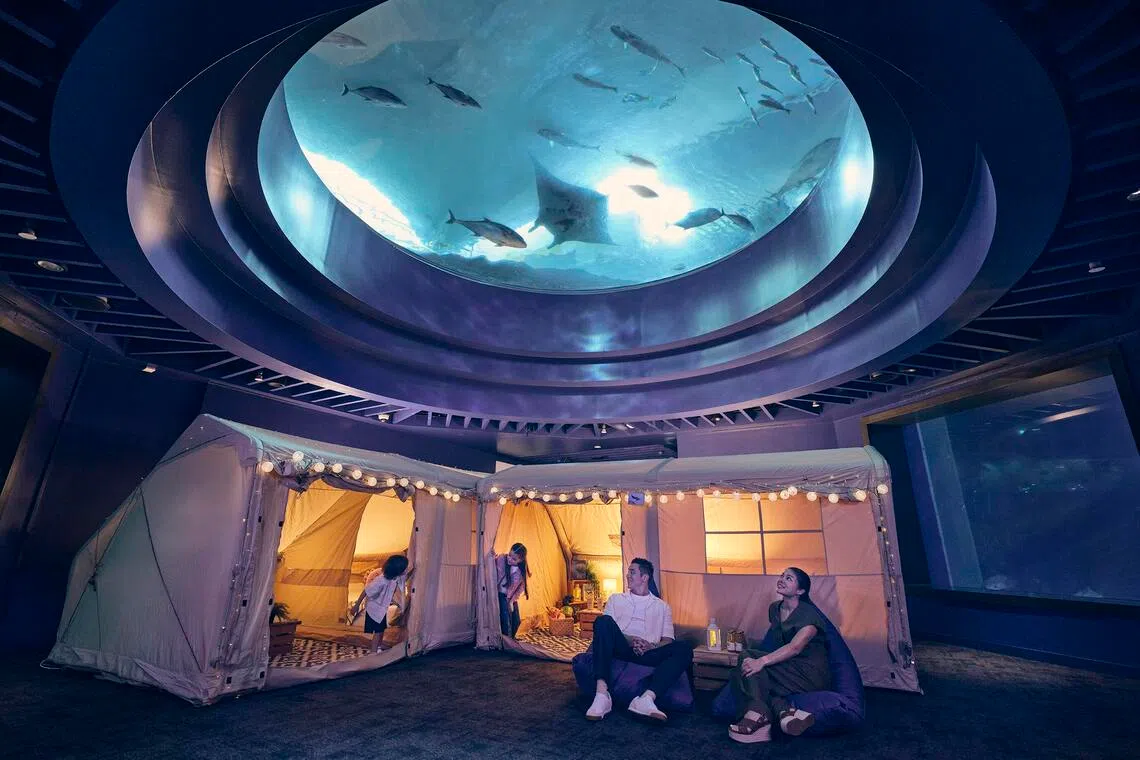
The Ocean Dome tent accommodates up to eight guests and offers a 270-degree view of the Open Ocean Habitat.
PHOTO: SINGAPORE OCEANARIUM
Ten tents have been set up in the Ocean Gallery, while one premium tent sits in the Ocean Dome. They come equipped with air-conditioning, ambient lighting, plush bedding and charging ports.
There are lots of thoughtful little touches: a basket of snacks and drinks, ear plugs, travel pillow, blanket, towel, lamp and even a hair dryer. We also get an amenities pouch with socks and an eye mask.
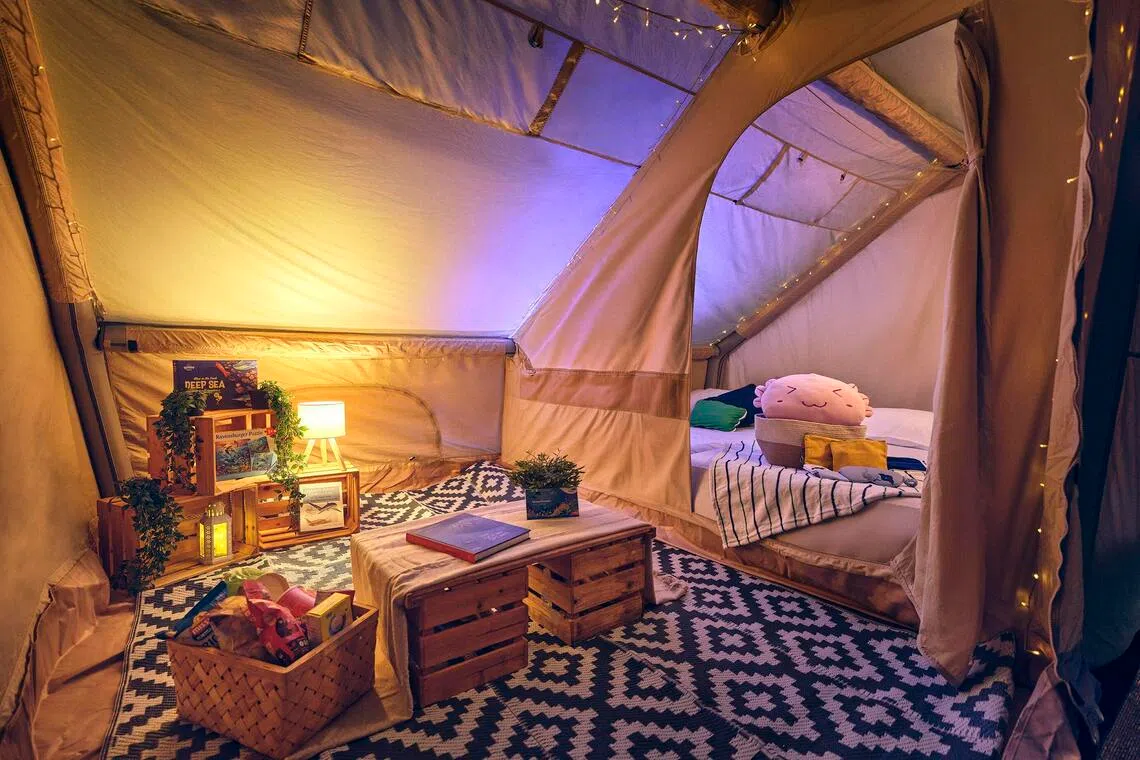
Amenities in the Ocean Dreams tent include a basket of snacks and drinks, travel pillow, blanket and hair dryer.
PHOTO: SINGAPORE OCEANARIUM
Families will appreciate features like a dedicated kids’ activity corner with storybooks, marine-themed board games, a badge-making activity and colouring sheets.
My tent, called Reef Manta Ray, is in the Ocean Dome, housed in a space that showcases a 270-degree view of the Open Ocean Habitat. It comes with a private lounge area, kids’ activity corner and hot beverage station.
From the edge of the tent, I lie back and watch manta rays and leopard sharks glide past in the water.
It feels like a childhood fantasy come true. It is the closest thing to sleeping in the ocean itself – calming and therapeutic.
Good morning, ocean dreamers
The next day begins with breakfast at 7am. Just as we are finishing our meal, two divers surface before the viewing window, unfurling a banner that reads: “Good morning, ocean dreamers.”
The sight, which feels like a whimsical wake-up call from beneath the sea, draws delighted gasps.
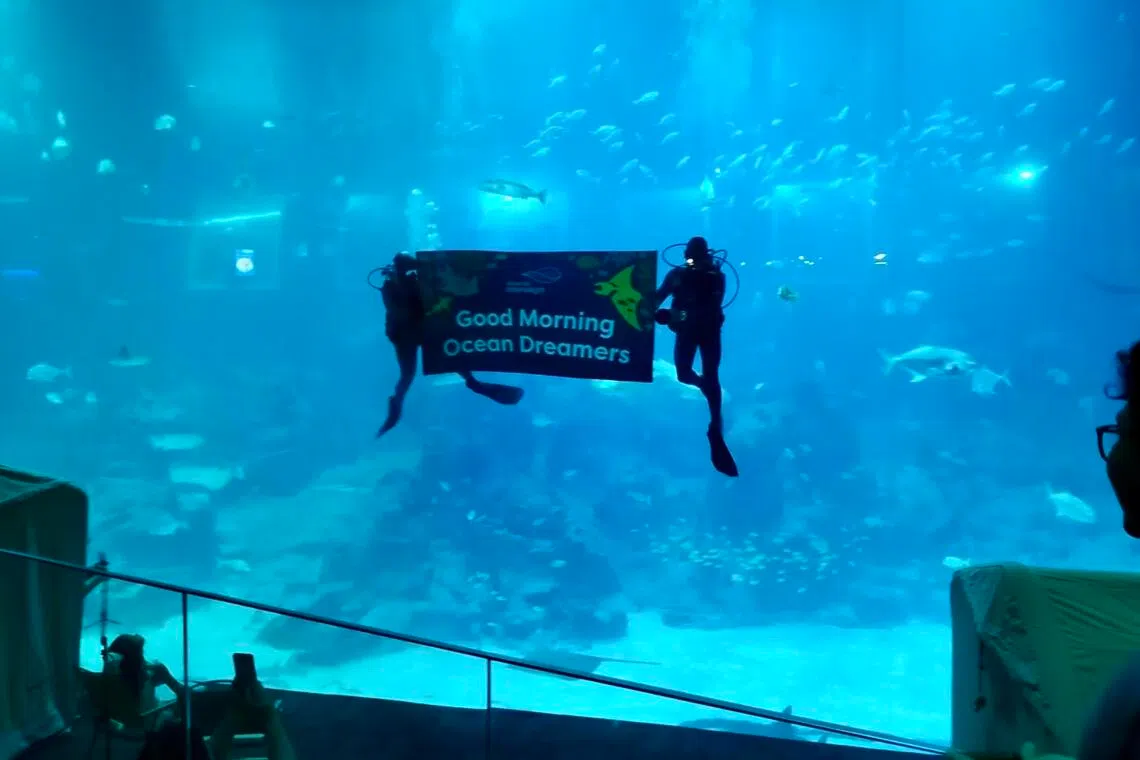
Two divers holding a banner that reads: “Good morning ocean dreamers.”
ST PHOTO: AMRITA KAUR
Then comes a behind-the-scenes tour of the support areas where animal-care specialists work. These are parts of the oceanarium that most visitors do not get to see: Aquarist Lab, Coral Fragment Room, the support area at the Open Ocean Habitat, Amphibian & Reptile Centre, and Feed Preparation Room.
In the Coral Fragment Room, Ms Foo explains the different coral specimens and the process of coral fragmentation – a delicate method used to propagate corals – as well as how these unique animals feed, reproduce and form an essential marine ecosystem known as coral reefs.
In the Feed Preparation Room, I discover that more than 1,500kg of high-quality fish food is prepared each week, from krill to mackerel. The reef manta rays alone eat 4kg to 5kg of krill daily, with extras like garlic added for nutrients.
The highlight is watching an animal-care specialist feeding the manta rays at the Open Ocean Habitat support area.
The rays’ graceful movements and wide, flapping fins make for a mesmerising display as they glide effortlessly through the water.
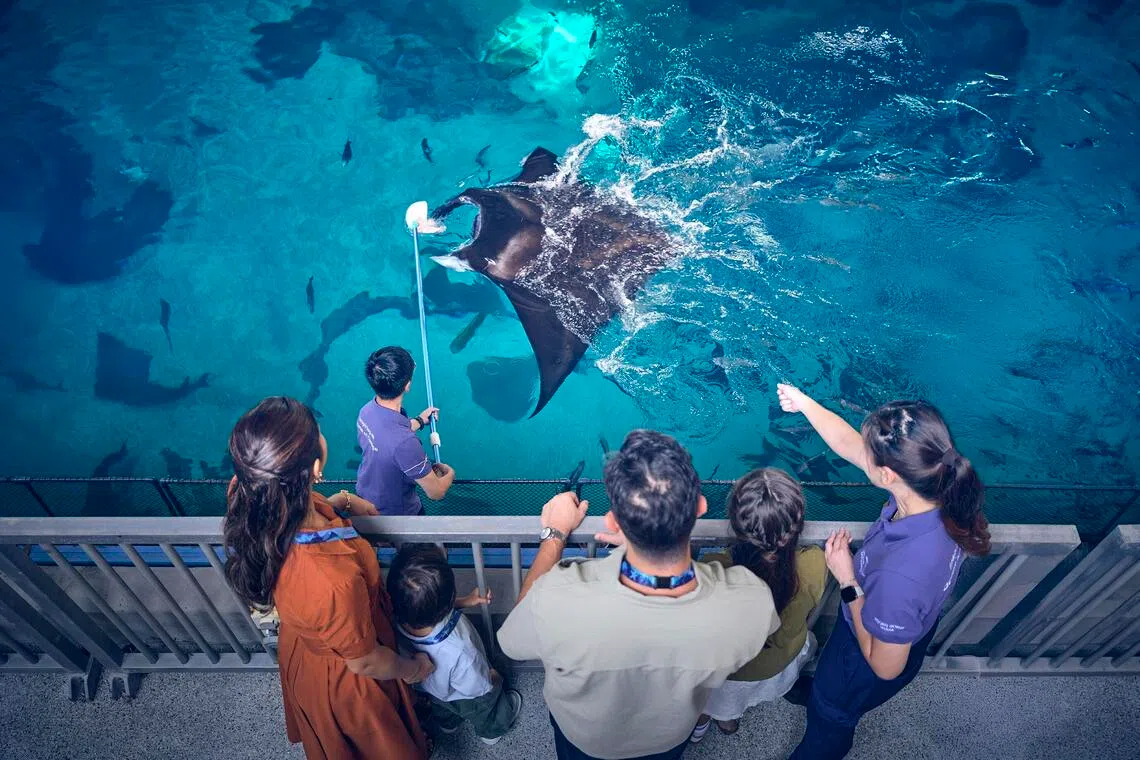
An animal-care specialist feeding manta rays at the Open Ocean Habitat.
PHOTO: SINGAPORE OCEANARIUM
By 11am, the programme has officially ended. But I stay a little longer to roam the oceanarium, reluctant to trade the quiet watery realm for the busy city.
I have eaten, slept and dreamt with the ocean. For one night, the underwater world felt like home.
The experience will run across four sessions, on Nov 28 to 29, and Dec 5 to 6, 12 to 13 and 19 to 20.
Each Ocean Dreams session has two tent types available for booking: the Ocean Gallery tent and the Ocean Dome tent. The gallery tent accommodates up to four guests at $1,800 a tent. The dome tent, which accommodates up to eight guests, costs $3,800.
For tickets and more information, go to
www.singaporeoceanarium.com/ocean-dreams


